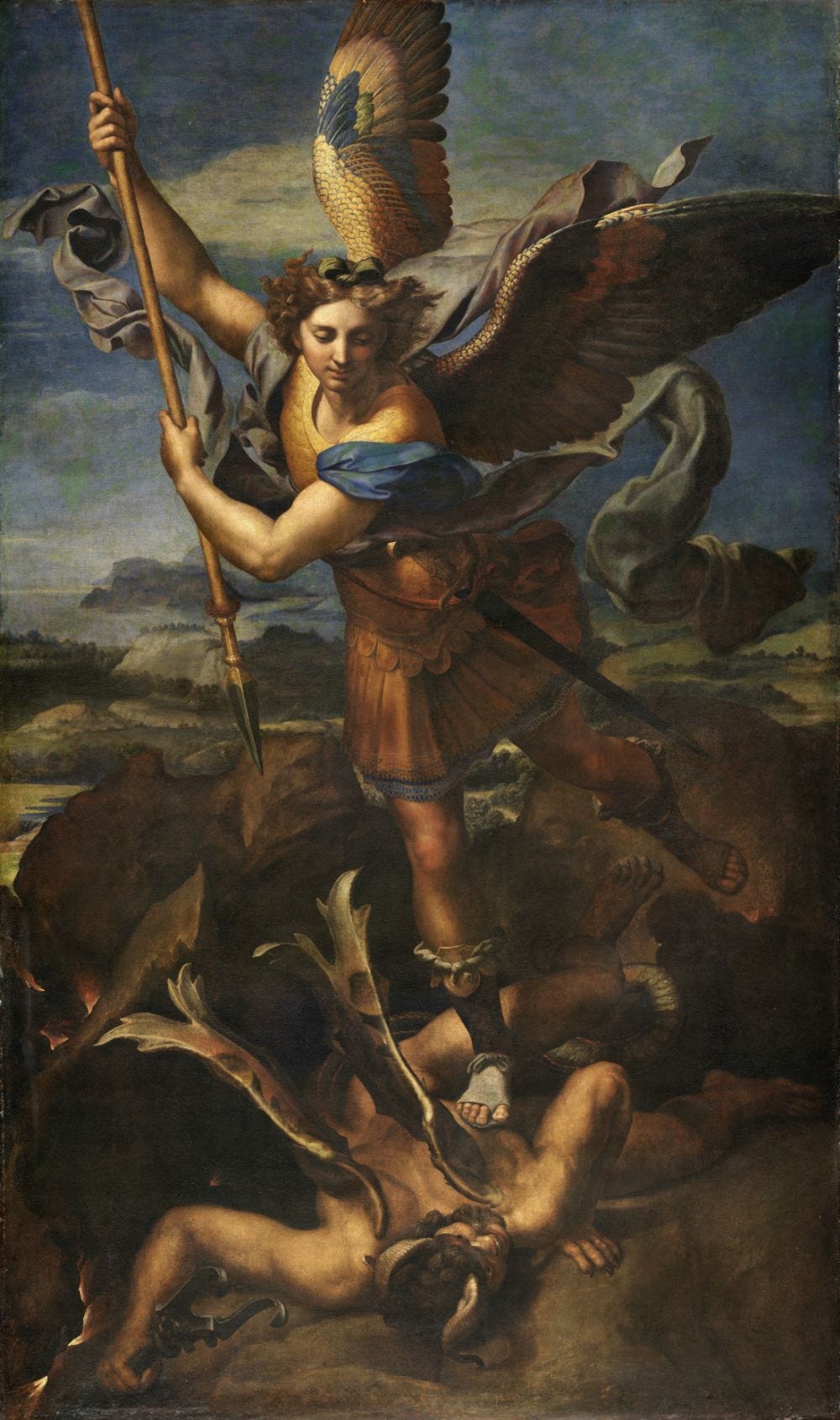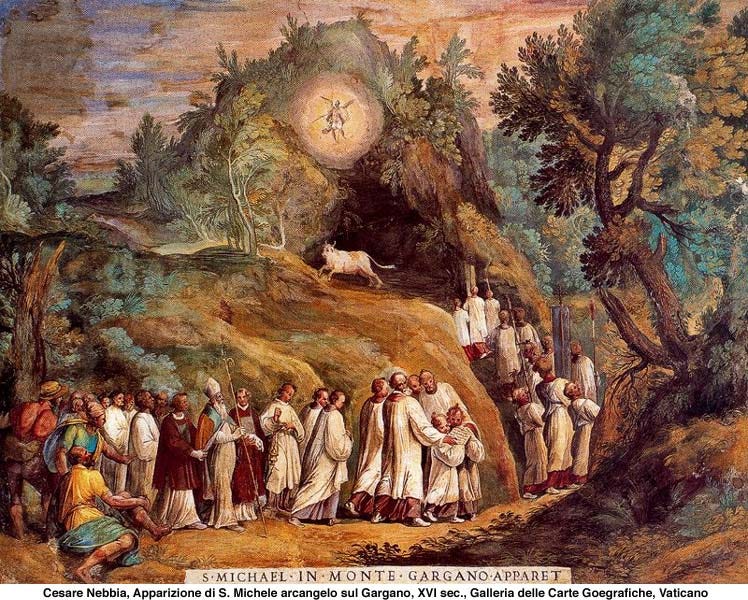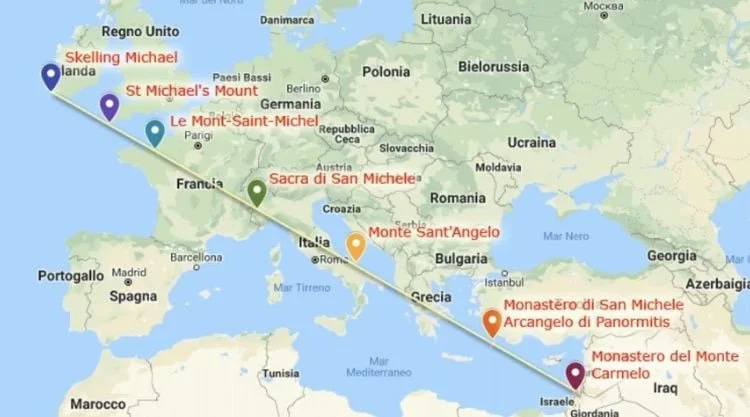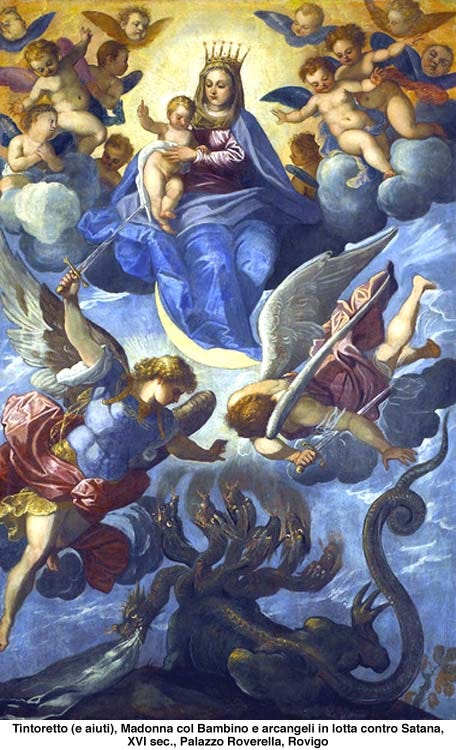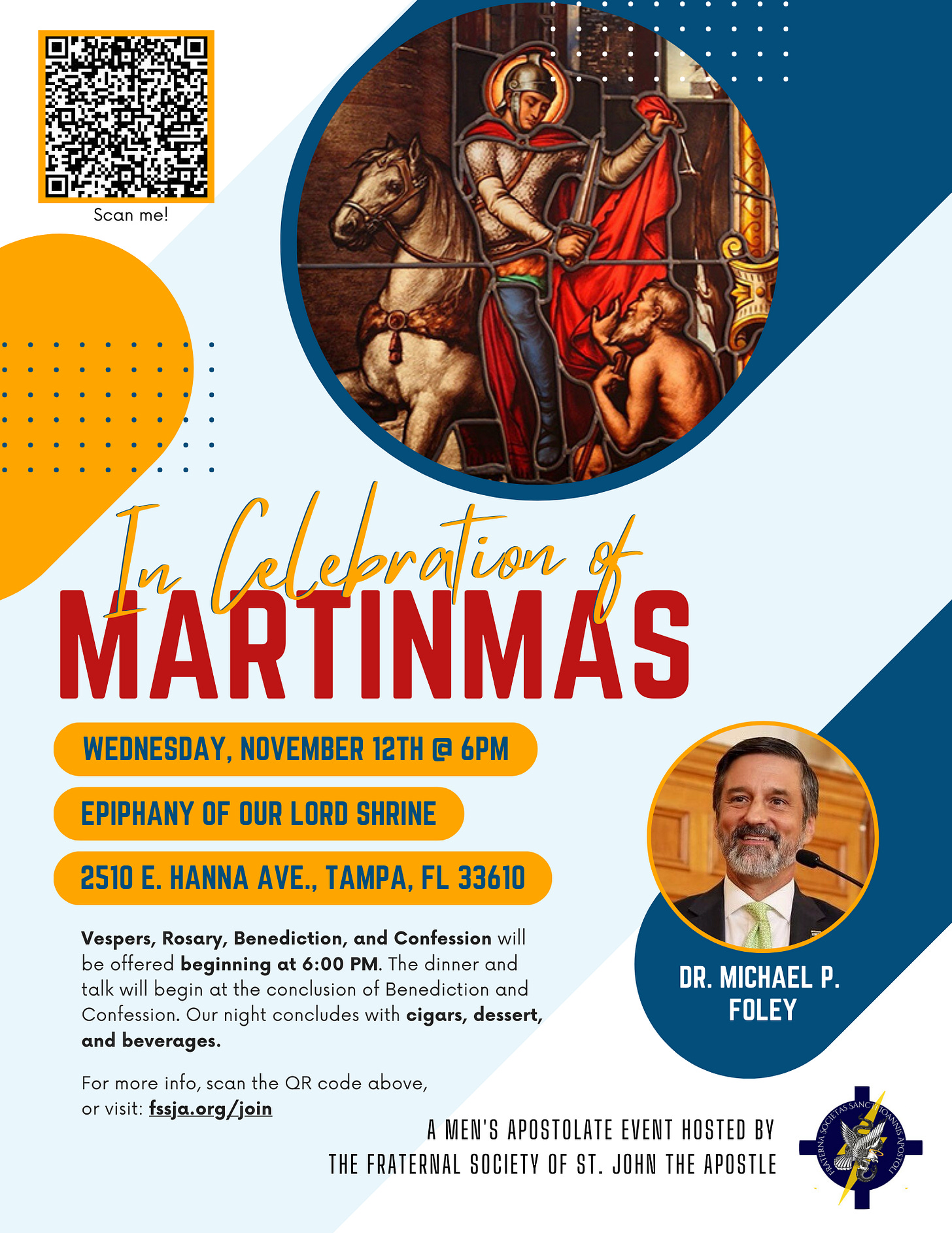Keeping Michaelmas in an Unquiet Age
Saints’ days have always been anchors—fixed stars in a sky that seems to move too quickly. Michaelmas, September 29, is one of those steadying feasts: a day when the Church fastens our attention on the unseen battle that shapes the world we actually live in. Not myth, not metaphor, but the angelic order, the war of worship, and the protection promised to the faithful. It is a feast of strength as the year turns toward dusk, a blaze of autumn light before the fields go still.
Below, we gather the history, the devotions, the customs, and the art that have helped Christians keep Michaelmas with both wonder and sobriety, drawing on a handful of sources worth savoring and saving.
The Captain of Heaven’s Hosts
The name Michael means “Who is like God?”—not a question, but a war cry. The Scriptures show him contending against the dragon, defending Israel, and standing “for the children of thy people” at the end of days.
Devotion to Saint Michael is not new-fangled sentiment. In the West, it courses through shrines, place names, and ancient feasts. A historical overview of St. Michael’s patronage and protection—his titles, miracles, and interventions—can be traced in this excellent summary: Beneath Saint Michael’s Shield source.
The living memory of his help often comes through stories handed down. One such tale, The Legend of Saint Michael and the Hermit, carries the paradox at the heart of the archangel’s aid: we are guarded not by flattery, but by purifying truth and penitence source.
What Michaelmas Remembers
In the older calendars, September 29 was known as the Feast of Saint Michael (later of “Saints Michael, Gabriel, and Raphael,” and in some places linked to the guardian angels). It’s a hinge day—summer’s vigor tempered by autumn’s sobriety.
Traditional guides preserve the way this time after Pentecost bends toward vigilance: the Church recalls the angelic hosts and the last things, urging hearts to watch and pray. For a treasury of customs, prayers, and seasonal notes for this Sunday cycle, see Time After Pentecost, Week 10 resources source.
Michaelmas is paired, in many places, with the pastoral rhythms of the sea and harvest. There’s a beautiful collection of marine devotions and blessings linked to this season, echoing the sense that Saint Michael’s protection extends to those who brave dangerous waters and uncertain horizons source.
Devotions: The Prayer and the Line
The Prayer to Saint Michael—composed in the wake of a vision granted to Pope Leo XIII—remains a short, resolute petition: “defend us in battle.” It’s a good habit to pray it daily, and especially today.
Chaplets honoring Saint Michael invoke the nine choirs of angels and ask, with concrete clarity, for protection and perseverance in virtue.
Pilgrimage often traces the contours of faith in the world. One of the most striking threads is the so‑called “St. Michael’s Line,” a nearly straight alignment linking famed sanctuaries from Skellig Michael in Ireland to Monte Sant’Angelo in Italy and beyond. Whether you approach it as geography or providence, it serves as a cartography of devotion—a reminder that Christian memory maps meaning onto land, sky, and sea source.
For a compact overview of Saint Michael’s patronage—soldiers, police, mariners, the sick, the dying—and the old prayers and practices surrounding this day, the historical notes gathered here repay attention: Beneath Saint Michael’s Shield source.
Customs and the Old Ways of Keeping the Day
Fasting and Vigil: Many communities kept a vigil fast before Michaelmas, sharpening the appetite for the feast’s joy. The discipline frames celebration with purpose.
Blessing of Michaelmas Foods: Goose was the traditional centerpiece in parts of Europe—“Eat your goose on Michael’s day, want not for money all the year”—a folk memory tying prudence to providence. Blackberries appear in many places as well, with the old tale that the devil fell into a blackberry bush on Michael’s Day and spoiled the fruit thereafter; so you eat them now, before October turns the brambles bitter. Seasonal notes and recipes are preserved in the Time After Pentecost compendium source.
At this time of year, the Aster (Aster nova-belgii) blooms, and it has become known as the Michaelmas Daisy. The Michaelmas Daisy comes in many colors, from white to pink to purple. An old verse goes (note that the Feast of SS Simon and Jude is October 28):
The Michaelmas Daisies, among dede weeds,
Bloom for St Michael’s valorous deeds.
And seems the last of flowers that stood,
Till the feast of St. Simon and St. Jude.An old custom surrounds Michaelmas Daisies; one plucks off the petals one by one thus: pull a petal while saying “S/he loves me,” then pull of the next while saying “S/he loves me not,” and repeat until all petals are gone. The words one intones while pulling off the last petal lets one know if one’s love is requited.
As to foods, geese were, at least at one time, plentiful during this time of year, so roast goose dinners are traditional (eating them on this day is said to protect against financial hardship, according to Irish and English folk belief). It was also the time (at least in Ireland) when the fishing season ended, the hunting season began, and apples were harvested, so eating apples today with that goose would be a nice touch.
Roast Goose with Apples (serves 8)
1 13-lb. goose, giblets and neck discarded (you’ll need 1 lb per person)
3 cloves garlic, thinly sliced
8 golden delicious apples, peeled, each cut into 6 wedges
1/4 cup fresh lemon juice
6 TBSP sugar
1/4 cup calvados (apple brandy)
1 1/2 tsp ground cinnamon
Position rack in bottom third of oven and preheat to 350oF. Rinse goose inside and out; pat dry with paper towels. Sprinkle inside and out with salt and pepper. Using knife, cut small slits all over goose; place garlic slices into slits. Place goose on rack, breast side down, in large roasting pan. Roast goose 2 hours 45 minutes, basting occasionally with drippings and removing excess fat; reserve 6 tablespoons fat. Turn goose over. Roast until brown and thermometer inserted into thickest part of thigh registers 175°F, basting occasionally with drippings, about 45 minutes longer. Meanwhile, toss apples and lemon juice in large bowl. Pour 6 tablespoons goose fat into 15 x 10 x 2-inch glass baking dish. Using slotted spoon, transfer apples to baking dish; toss apples in goose fat. Add sugar, Calvados and cinnamon to apples; toss. Bake apples alongside goose until very tender and golden, about 1 hour. Serve goose with caramelized apples and a Bordeaux wine.
The city of Augsburg, Germany holds an annual autumn fair to which hundreds of peasants from far and near come for trade and pleasure. Chief among the day’s attractions is the hourly appearance of figures representing the Archangel and the Devil. The figures are built in the foundation of Perlach Turm, or Tower, called Tura in local dialect. This slender structure, which rises to a height of two-hundred-and-twenty-five-feet and stands next to the Peter’s Kirche, north of the Rathaus, originally was a watch tower. In 1615 the watch tower was heightened and converted into a belfry.
Almost a hundred years earlier the group depicting the saint and the devil had been installed in the tower’s understructure. Annually on his feast day the archangel’s armor-clad figure, holding a pointed spear, appeared whenever the tower bell struck, and stabbed at the devil writhing at his feet.
During World War II the historic figures--the delight of generations of fair-goers--were destroyed. Since then a new group has been made and installed. Today, as for over four centuries, spectators continue to gather about the Tura and to watch breathlessly the symbolic drama of Michael, head of the Church Triumphant, dealing death blows to the dragon which brings evil and destruction to the world of men.Sea and Shore: In fishing villages, blessings of boats and crews clustered around this week. The marine devotions gathered here show how feasts were braided into the working life of families who depended on dangerous trades and trusted in angelic guardianship source.
Children and Homes: Parents would teach the short St. Michael prayer, enthrone a small icon or statue for the day, and read a legend after supper. The tale of the hermit’s correction is apt: Saint Michael’s care is holy, not indulgent source.
Seeing the Invisible: Angels in Art
Art catechizes the senses. Eliza Allen Starr’s reflections on depictions of the Three Archangels and Guardian Angels walk through how painters and sculptors distinguish their missions—Michael with the sword or scales, Gabriel with the lily, Raphael with staff and fish—and why such symbol language matters source.
Michael’s sword is not merely martial pageantry; it signifies judgment and the defense of the worship owed to God. The scales, sometimes shown at the last judgment, remind us that mercy and justice are not enemies but truths held perfectly in God.
When homes and churches place Saint Michael at thresholds—doors, porches, city gates—they’re making a theological claim: that entryways need guardians because souls do.
Keeping the Feast This Year
Light a candle before an image of the Archangel and pray the short prayer with intention for your family, parish, and country. Add the chaplet if you can.
Make the day feel different at the table: a roast—goose if you’re keeping to the old ways, or a humble chicken if not—and a blackberry dessert to close the year’s bramble harvest.
Read aloud one of the legends after the meal. The Legend of Saint Michael and the Hermit is brief, bracing, and memorable for children and adults alike source.
If you live near the coast or a river town, take a small walk and pray for those who work the waters, borrowing from the traditional marine devotions that accompany this season source.
Consider the geography of devotion. Study the St. Michael’s Line and pick one shrine—near or far—to read about or spiritually “visit” today. Pilgrimage begins with desire source.
Why Michaelmas Matters
This feast presses a quiet thesis against modern pretensions: that reality is larger than what we can instrument, and that the most important battles are fought with faith, penance, and praise. Anger is easy; worship is costly. Yet Michael’s very name is a call to order our loves: Who is like God? Not the state, not the market, not our appetites, not our fears.
As the days shorten, we’re invited to clear our hearts and steady our households. The angels are not mascots; they are servants and warriors, and their fidelity should hearten ours. Keep the feast simply and well—pray, eat, bless, remember. And let the old customs shape a new resolve.
Further Reading and Sources
Beneath Saint Michael’s Shield source
The Legend of Saint Michael and the Hermit source
Three Archangels and the Guardian Angels in Art, by Eliza Allen Starr source
Time After Pentecost – Week 10: customs and notes for the season source
Marine devotions and customs around this time source
The St. Michael’s Line: shrines and pilgrimage thread source
Join us on Wednesday, November 12th for our final event of the Liturgical Year when we celebrate the Feast of St Martin of Tours with Dr. Michael P. Foley, author of Drinking with the Saints. There will be a catered meal provided by Mission BBQ in honor of our Veterans and St Martin who is the Patron Saint of Soldiers. We will of course have our usual array of beverages, cigars, dessert, and live entertainment! See you in November!


